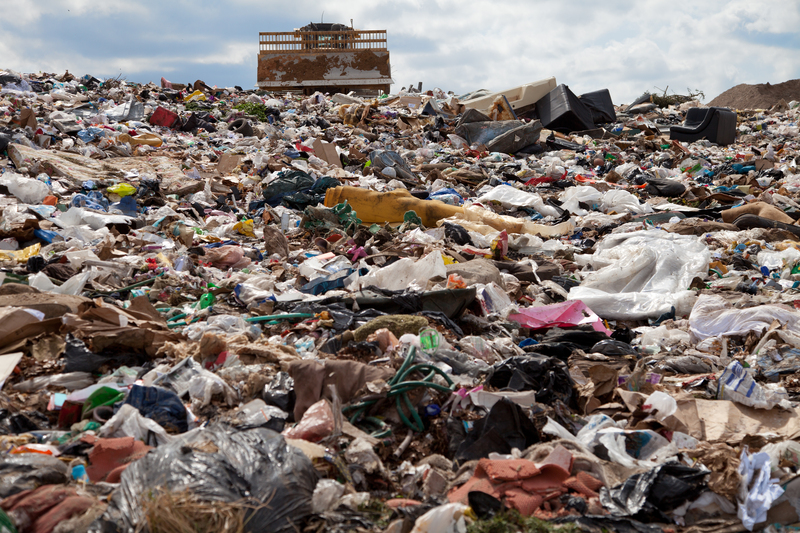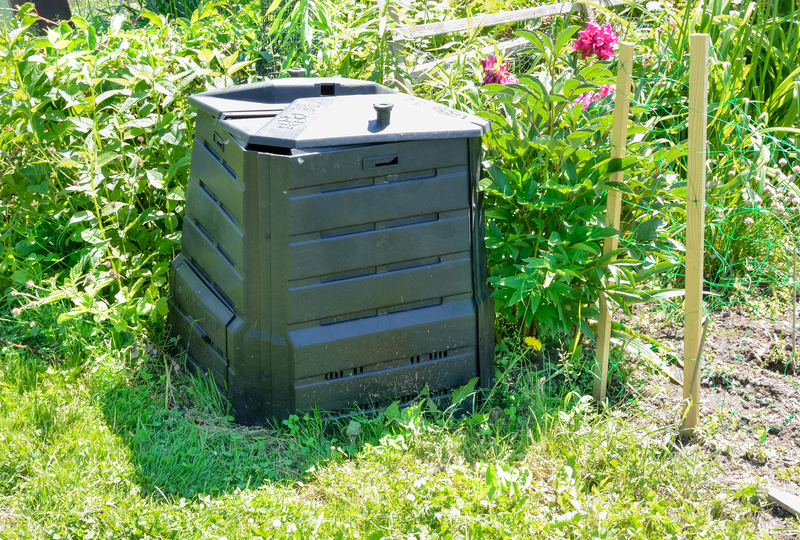Best Practices for Disposing of PPE Waste Without Polluting
The widespread use of Personal Protective Equipment (PPE) has become essential in healthcare, workplaces, and daily life, especially following the COVID-19 pandemic. However, the environmental challenge of PPE waste disposal is something we cannot ignore. This article outlines best practices for disposing of PPE waste without polluting, ensuring that public health and our planet are protected. If you are committed to sustainable habits, read on to discover comprehensive strategies for safe management of all PPE waste streams.
Understanding PPE Waste and Its Environmental Impact
PPE waste encompasses disposable masks, gloves, gowns, face shields, and other protective items designed for single-use. While these items help control infection spread, their improper disposal can result in:
- Pollution of water bodies
- Hazardous exposure to sanitation workers and wildlife
- Microplastic contamination
- Blocked drainage and urban infrastructure issues

Principles of Responsible PPE Waste Disposal
- Reduce generation--opt for reusable PPE if possible.
- Segregate at the source--separate hazardous PPE from regular waste.
- Follow local regulations for biohazard waste handling.
- Educate communities and staff on proper PPE waste handling techniques.
Below, we break down these strategies in detail and provide actionable steps for individuals, businesses, and institutions.
How to Properly Dispose of PPE Waste: Step-by-Step Guide
1. Segregate PPE Waste from General Waste
Segregation is a cornerstone in any waste management protocol. Always separate PPE waste from recyclable and organic waste, as used PPE may harbor pathogens or hazardous chemicals.
- Use clearly labeled bins for PPE at homes and workplaces.
- Employ color-coded bags (usually yellow or red for medical/hazardous waste) as required by local guidelines.
- Avoid mixing PPE with recyclables to prevent contamination.
2. Safe Containment: Double Bagging
Double-bag used PPE items, especially if contaminated by bodily fluids, for containment and to prevent leaks. Tightly tie the bags and avoid compressing them by hand. This process reduces the risk of transmission and environmental leakage.
3. Proper Labeling and Signage
Clear signage is vital for the safe disposal of PPE waste. Use visible, durable signs instructing the correct disposal method for masks, gloves, face shields, etc. Proper labeling prevents confusion and accidental contact, which could lead to pollution or transmission.
4. Use of Designated Collection Points
Place dedicated PPE waste bins at entrances of offices, hospitals, schools, and public spaces. Make them foot-operated or touchless whenever possible to minimize cross-contamination.
5. Collaboration with Licensed Disposal Services
Hospitals, clinics, and workplaces should establish agreements with certified biomedical waste disposal services. These companies have protocols and technologies to treat and destroy hazardous PPE waste safely without risking pollution.
- Check for required licenses and government approvals.
- Request documentation of waste treatment methods used (e.g., autoclaving, incineration).
6. Avoid Littering and Dumping in Open Spaces
Improper PPE waste disposal can lead to wind-blown litter, water contamination, and risks to wildlife. Dispose of all PPE in secure, closed bins and educate the wider community about the environmental dangers of littering.
Environmentally Friendly PPE Waste Disposal Methods
Autoclaving (Steam Sterilization)
Autoclaving uses high-pressure steam to disinfect PPE waste, rendering it non-infectious. The sterilized waste can then be safely landfilled without risking pollution.
Incineration
When done at high temperatures in modern facilities, incineration ensures complete destruction of pathogens and plastics in PPE. However, poorly maintained incinerators can release harmful dioxins and furans. Thus, always choose certified facilities that comply with emissions guidelines.
Chemical Disinfection
Some facilities treat PPE waste with chemical disinfectants before disposal. While effective, it is crucial that only environmentally safe chemicals are used, and that treated waste is managed in compliance with hazardous waste laws.
Landfilling (as a Last Resort)
If sterilization or incineration is unavailable, landfilling is permitted but should only be done in engineered landfills designed to prevent leachate and environmental contamination. Never burn PPE at home or dump it in open landfills.
Special Considerations for PPE Waste in Households
While healthcare institutions follow strict protocols for PPE waste disposal, households must also adopt safe and sustainable practices to prevent accidental pollution and virus spread.
Home PPE Disposal Best Practices:- Place used masks and gloves in a separate lined bin or bag.
- Do not flush PPE down toilets--this causes sewage blockages and environmental contamination.
- Seal bags tightly before discarding with household waste, following local collection rules.
- Wash hands thoroughly after handling used PPE or waste bags.
- Do not recycle used PPE alongside regular recyclables.
Reducing PPE Waste Generation
Opting for Reusable PPE Where Safe
Whenever possible and safe, shift to reusable PPE alternatives. For example, cloth masks can be washed and reused multiple times, generating less waste than disposable masks. Opt for PPE made from durable materials that can withstand repeated sterilization.
Minimizing Single-Use Items
Encourage institutions to assess their PPE consumption. Implement protocols for extended use or re-use, where guidelines permit. This not only lessens environmental impact but can also reduce costs.
Community Awareness and Education
Public awareness campaigns are critical for effective PPE waste management. Governments and organizations should:
- Educate on the risks of improper PPE disposal
- Promote correct use of PPE bins and bags
- Advocate for reduction and reuse where possible
Health and Safety Precautions for Handlers
Whether at home, in community centers, or healthcare settings, everyone handling PPE waste must follow protective measures:
- Wear protective gloves and a mask when disposing of PPE waste.
- Wash hands immediately after removal and handling of waste bags.
- Sanitize or wash bins regularly to remove contamination.
Responsibilities for Businesses and Organizations
For employers, facility managers, and event organizers, safe PPE waste management is both a legal and an ethical duty. Here's how to set up a sustainable system:
- Provide adequate, marked PPE disposal bins throughout the premises.
- Train staff on waste segregation and correct disposal protocols.
- Partner with certified waste management companies.
- Display educational posters and reminders in high-traffic areas.
A proactive approach showcases your commitment to community health and environmental stewardship.
Innovations in Eco-Friendly PPE Waste Disposal
The global surge in PPE waste has accelerated research into sustainable alternatives and smarter disposal techniques:
- Biodegradable PPE: Brands are developing compostable face masks and gloves that break down in the environment without harming wildlife.
- PPE recycling programs: Specialized programs now collect used PPE and transform it into plastic lumber, construction material, or energy via pyrolysis.
- Advanced sterilization: Emerging technologies use ozone, UV-C light, and microwave treatment to render used PPE safe for further processing.
Global Guidelines for PPE Waste Disposal
The World Health Organization (WHO), Centers for Disease Control and Prevention (CDC), and local health authorities have released best practice guidelines for PPE waste. Key recommendations include:
- Designate separate PPE waste bins in public and private spaces.
- Prefer autoclaving or incineration at high temperature by licensed operators.
- Never reuse single-use PPE without professional-grade sterilization.
- Ensure all handlers have PPE and training.
- Implement community engagement for safer waste collection.
What Not to Do: Common PPE Waste Disposal Mistakes
- Do not flush masks or gloves down the toilet--this causes sewer blockages.
- Never burn PPE waste at home--this releases toxic fumes and risks fire incidents.
- Do not discard PPE in open fields or waterways--this harms wildlife and spreads pollution.
- Don't mix PPE waste with recyclables--this jeopardizes recycling workers and contaminates entire batches of recycling.

Conclusion: Protect Our Health and the Planet
The surge in PPE usage is a testament to our collective resolve to preserve public health. But we must match that with equal dedication to protecting our environment. By adopting the best practices for disposing of PPE waste without polluting, every individual, business, and institution can play a vital role in preventing environmental degradation and supporting a sustainable recovery from the ongoing public health crisis.
Remember: Segregate, contain, and dispose of PPE safely. Choose eco-friendly alternatives when possible, educate others, and support innovations in waste management. Our actions today shape the wellbeing of future generations--and a cleaner, healthier world.
Frequently Asked Questions (FAQs) on Eco-Friendly PPE Waste Disposal
Q: Can I recycle my used disposable mask and gloves?
No. Most disposable PPE items are made from mixed materials and cannot be recycled in regular curbside recycling programs. Always dispose of them as hazardous or general waste, following your local authority's advice.
Q: What should I do if I see PPE littering in my community?
Report it to local waste management services or relevant authorities. Avoid handling discarded PPE with bare hands--use gloves and sanitize hands thoroughly afterward.
Q: Are there initiatives that turn PPE waste into useful products?
Yes, some companies are collecting PPE waste and upcycling it into construction materials or fuels. Look for community programs or waste collectors that participate in such initiatives.
Q: How can I reduce my PPE waste footprint?
- Use reusable masks whenever safe.
- Encourage your workplace or school to adopt proper collection and eco-friendly disposal systems.
- Stay informed about local recycling and waste reduction programs.
By following these tips and best practices for PPE waste disposal, you actively contribute to a cleaner, safer world--one mask and glove at a time.